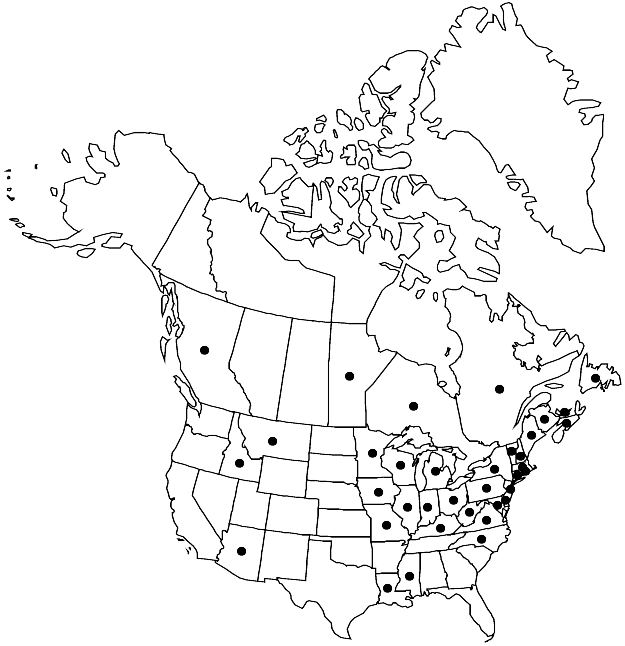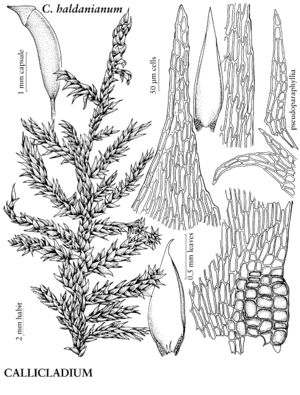Difference between revisions of "Callicladium haldaneanum"
Bryologist 74: 167. 1971 (as haldanianum).
GeoffLevin (talk | contribs) m (Corrected spelling of specific epithet in accepted name, basionym, and synonym from "haldanianum" to "haldaneanum") |
GeoffLevin (talk | contribs) m (GeoffLevin moved page Callicladium haldanianum to Callicladium haldaneanum: Corrected spelling of specific epithet of accepted name) |
(No difference)
| |
Latest revision as of 17:52, 13 January 2024
Stems 3–8 cm; cortical cells small, walls thick; pseudoparaphyllia few; rhizoids few, in clusters just below leaf insertion, smooth. Leaves crowded, upturned-homomallous particularly near branch ends, scarcely altered on drying, concave, 1–2 × 0.5–0.8 mm; alar cells enlarged, yellow-brown, walls thick, region in several rows of cells, concave; basal laminal cell walls pitted; medial cells linear, 55–95 × 5–8 µm, walls moderately thick. Seta 1.5–3.2 cm, flexuose. Capsule reddish orange-brown, 1.7–3 mm, slightly wrinkled when dry; endostome segments not or narrowly perforated along keel. Spores 10–18 µm, yellow.
Phenology: Capsules mature fall–winter.
Habitat: Logs, stumps, conifer and hardwood forests, base of trees, soil, rock, forests
Elevation: low to moderate elevations
Distribution

B.C., Man., N.B., Nfld. and Labr. (Nfld.), N.S., Ont., P.E.I., Que., Ariz., Conn., Del., Idaho, Ill., Ind., Iowa, Ky., La., Maine, Md., Mass., Mich., Minn., Miss., Mo., Mont., N.H., N.J., N.Y., N.C., Ohio, Pa., R.I., Vt., Va., W.Va., Wis., Europe, Asia.
Discussion
Callicladium haldaneanum grows in flat or loose extensive mats that are usually devoid of other species. The plants are distinguished by their concave leaves, short double costa, curved nearly erect capsules, and sword-shaped, shortly tapered, somewhat flattened branches.
Selected References
None.
